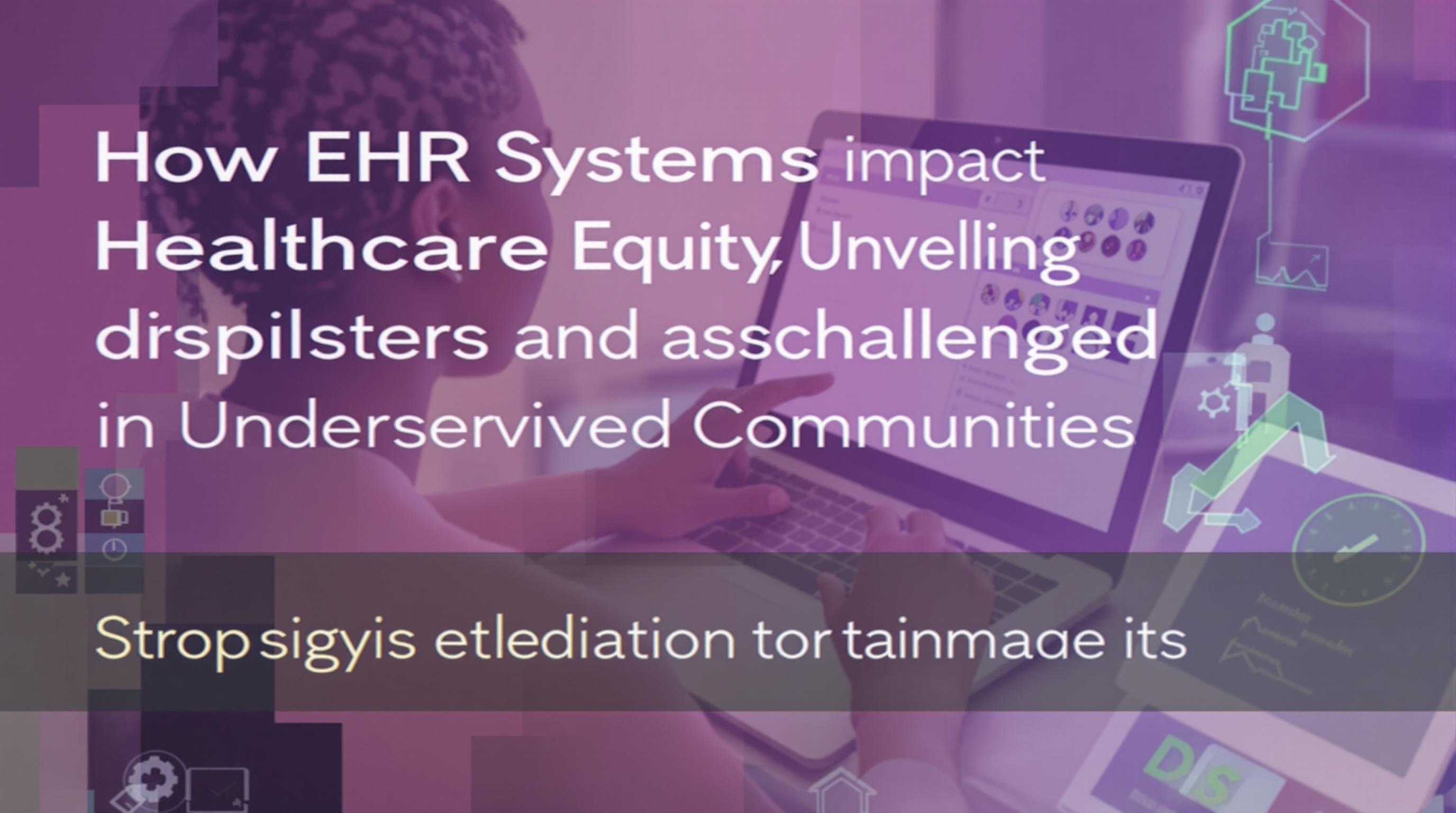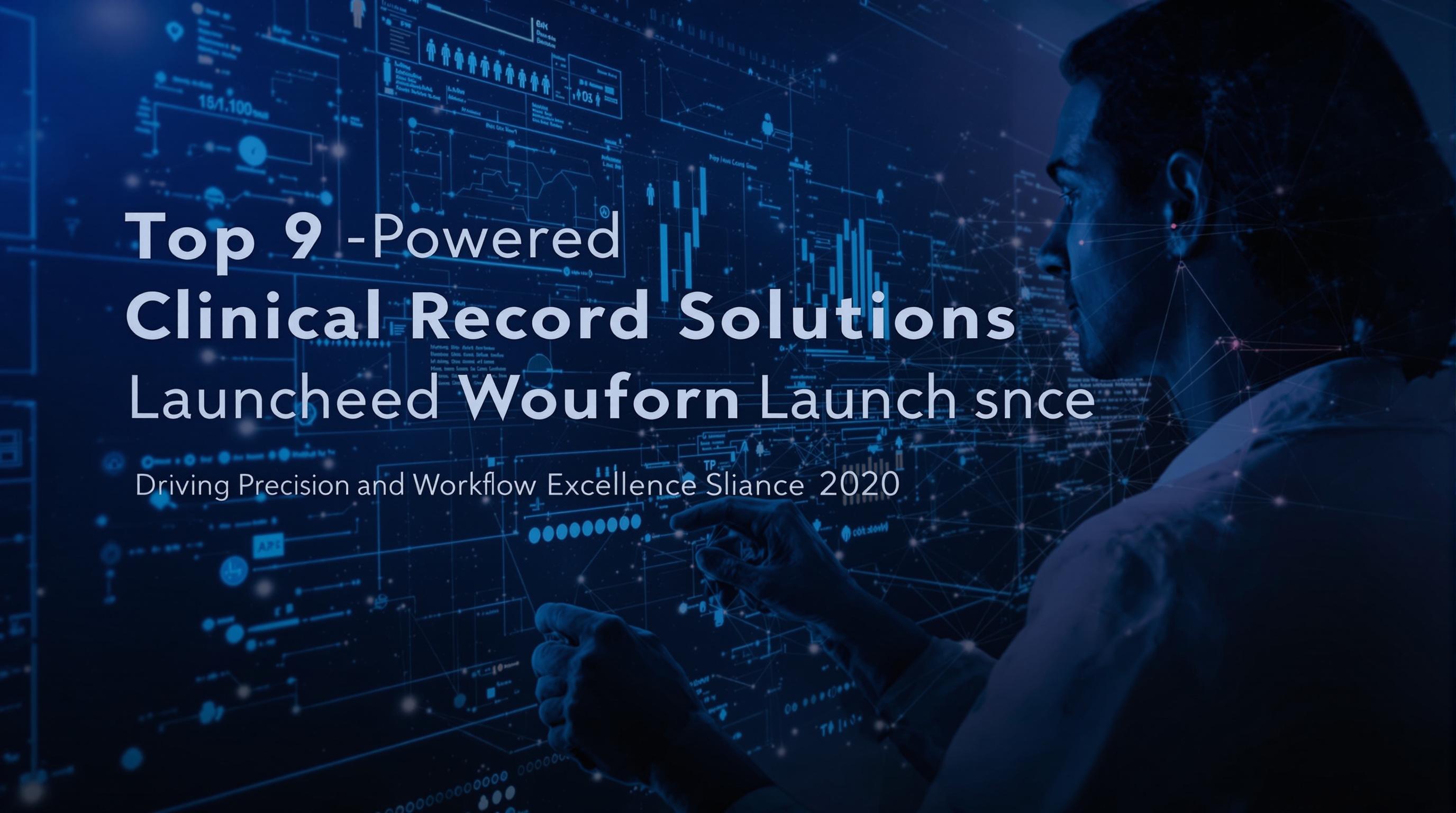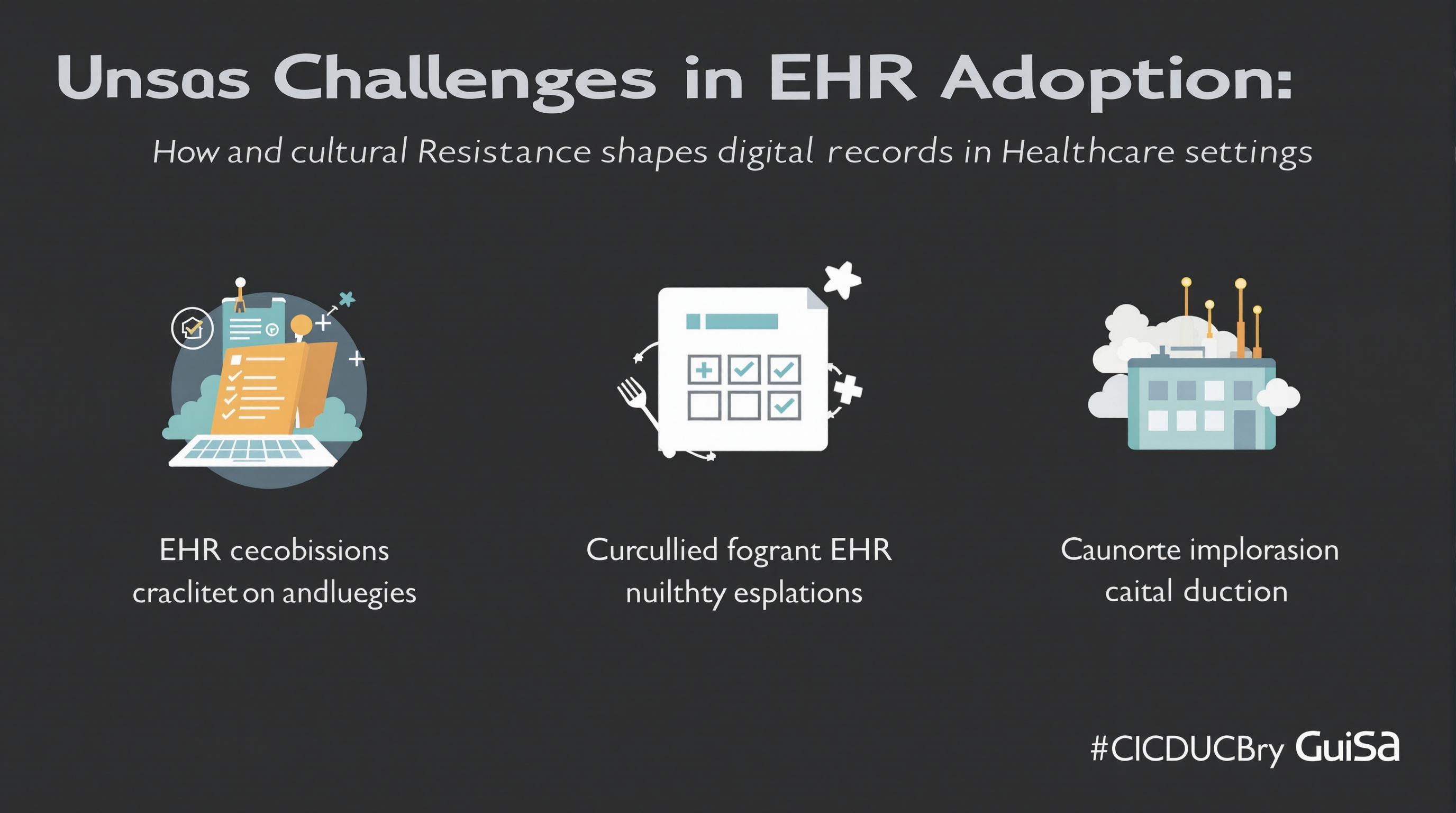Related Articles
- The Unexpected Impact of Environmental Factors on the Accuracy of Medication Dispensing Technologies
- Exploring the Influence of Mental Health Stigma on Accessibility and Affordability of Coverage in Modern Insurance Plans
- How Cloud Storage Quirks Are Quietly Complicating Patient Data Protection in Modern Healthcare Settings
- Top 6 Emerging Medical Billing Platforms Revolutionizing Practice Revenue Cycles Since 2019
- When Digital Distance Deepens Divide: Surprising Social Costs of Remote Health Services in Underserved Communities
- The Unexpected Role of EHR Usability in Physician Burnout and Strategies to Reclaim Workflow Balance
How EHR Systems Impact Healthcare Equity: Unveiling Disparities and Access Challenges in Underserved Communities
How EHR Systems Impact Healthcare Equity: Unveiling Disparities and Access Challenges in Underserved Communities
Electronic Health Records (EHR) systems promise a future where healthcare is seamless and efficient, yet their impact on healthcare equity reveals a complex dance of progress and pitfalls. In this article, we delve into how EHR systems both help and hinder underserved communities, exposing disparities and access challenges.
As a 42-year-old healthcare analyst, I’ve seen firsthand how technology can bridge gaps but also widen divides. Consider a rural clinic in Mississippi, where internet connectivity falters, rendering EHR systems practically useless. Despite federal incentives encouraging digital adoption, these areas lag behind, creating a digital divide that exacerbates health disparities.
When EHR Systems Fall Short: The Connectivity Conundrum
Imagine a patient living in a remote Native American reservation. Their local clinic has adopted an EHR system, but poor broadband access means healthcare providers spend more time trying to input data than caring for patients. The U.S. Department of Health and Human Services reports that nearly 23% of rural Americans lack broadband, directly affecting EHR usability and, ultimately, patient outcomes.
Storytime: Mrs. Johnson’s Struggle to Get Coordinated Care
Mrs. Johnson, a 67-year-old diabetic in an underserved urban neighborhood, illustrates the tangled web of access challenges. With multiple specialists and a primary care physician, her paper chart was lost in a shuffle when her clinic transitioned to EHR. Fragmented systems and poor interoperability led to conflicting prescriptions and delayed care, demonstrating the unintended consequences of digitization.
The Good News: Improved Data Leads to Better Insights
Of course, EHRs are not without their virtues. They enable clinicians to collect comprehensive data, revealing patterns previously hidden in paper charts. For instance, the Veterans Health Administration employs a robust EHR system that has significantly improved chronic disease management and reduced hospital readmission rates.
Unequal Access: Cost and Training as Barriers
Implementing an EHR system isn’t just about slapping a computer in front of doctors and nurses. The upfront costs can be astronomical for small or underfunded clinics serving low-income populations. According to a 2019 Health Affairs article, smaller practices often lack the capital for EHR adoption and upkeep, which disproportionately affects clinics in underserved communities.
Furthermore, the steep learning curve can alienate healthcare workers already stretched thin. Without proper training, EHR use can become a source of frustration, reducing time spent with patients and increasing burnout.
The Interoperability Puzzle
One of the biggest challenges is getting different EHR systems to "talk" to each other. Imagine a person who moves between healthcare providers using incompatible systems — their data can become trapped or fragmented. This failure particularly impacts those with complex medical histories, often found in vulnerable populations.
A Statistical Snapshot
Research from the Office of the National Coordinator for Health Information Technology (ONC) shows that in 2022, only 63% of hospitals in rural areas reported the ability to share electronic patient data with outside providers, compared with 86% in urban hospitals. These gaps reflect systemic inequities embedded within digital healthcare.
Conversational Interlude: Why Should You Care?
Hey, if you’re thinking, "Why does this nerdy tech stuff matter to me?" here’s the deal — whether you’re 16 or 70, everyone deserves quality healthcare without hurdles. If EHR systems don’t work properly for underserved folks, it means more misinformation, misdiagnoses, or delayed treatment might happen to someone in your community or even your own family.
Positive Steps: Policy and Community Initiatives
Federal efforts like the Health IT for Underserved Populations program are aiming to close gaps by subsidizing EHR adoption and training in safety-net clinics. Specific grant funding has helped clinics integrate EHR systems tailored for diverse patient populations, including multilingual interfaces. These steps are critical but only part of the journey.
Human-Centered Design: The Future of EHRs
Tech developers need to infuse empathy into EHR systems, placing the end-user — both patient and provider — at the center of design. For example, an EHR with offline functionality could revolutionize care in low-connectivity areas. User-friendly interfaces reduce errors and improve data quality, enhancing equity by making systems accessible to all.
Let’s Get Humorous: The Case of Dr. Techno-Phobe
Picture Dr. Techno-Phobe, a 55-year-old GP resistant to new digital tools, grumbling about how computers “ruined medicine.” His story is common. Resistance often stems from inadequate support rather than obstinance. Providing training and demonstrating tangible benefits can turn Dr. Techno-Phobe into a digital champion.
Bridging the Cultural Divide
Another layer of complexity is cultural competency. EHRs need to account for social determinants of health — things like housing, income, and education — which disproportionately affect marginalized groups. Data fields capturing these elements can help clinicians tailor care and allocate resources effectively.
Conversely, lack of culturally relevant data can lead to misinterpretations and missed opportunities for intervention. A 2020 study in the Journal of Health Disparities Research found that clinics using enhanced social determinants modules within EHRs improved outcomes among minority patients by 15% in hypertension control.
The Bottom Line: Technology Is a Tool, Not a Cure
Ultimately, EHR systems carry enormous potential to improve healthcare quality and equity, but technology alone cannot fix deep-seated disparities. Without addressing infrastructure, training, interoperability, and cultural competency, EHRs may inadvertently reinforce existing gaps.
Healthcare equity demands a multifaceted approach — pairing innovations like EHRs with policy reform, community engagement, and social support networks. This vision stands as a beacon of hope for underserved communities striving toward health justice.
References:
- Office of the National Coordinator for Health Information Technology (ONC), 2023 Health IT Report
- Health Affairs, “The Financial and Operational Impacts of EHR Systems,” 2019
- Journal of Health Disparities Research, “Social Determinants and EHR Impact on Minority Health,” 2020
- U.S. Department of Health and Human Services, Rural Broadband Access Report, 2022




